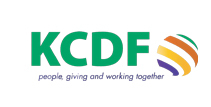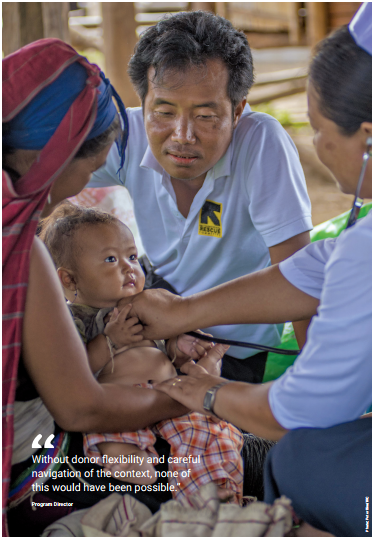Duncan Green's Blog, page 136
August 16, 2016
How to get a job in development: the definitive (368 page) guide
Because I’ve been having a lot of summer conversations with graduates and others wondering how to get a job in aid and development (and I have to admit, also because I’m up against a deadline and have no time to blog), thought I’d repost this ever-popular 2015 intro to a very useful book, plus other links.
How to get a job in aid and development? That is the question hovering over lecture theatres and seminar rooms everywhere,  as students rack up those debts and wonder if/how they will ever get a job which both fulfils them and keeps them solvent.
as students rack up those debts and wonder if/how they will ever get a job which both fulfils them and keeps them solvent.
Up until now, the only place to refer people has been long lists of links, a scatter of websites like Devex or AidBoard and random posts from people like me (my post also includes links to assorted aid gurus blogging on this topic).
Now, there’s something much more substantial. This week, Routledge is publishing ‘Working in International Development and Humanitarian Assistance: A Career Guide’ by Maia Gedde, with a foreword by me. It’s 370 pages of invaluable material, but it costs $60 in paperback – maybe one for a library order?
The book provides a brief history of the aid business and explores some of the aspects that attract people to the sector (as well as the common concerns). Then it gets into the nitty gritty – how to ‘break into the sector’ (routes, qualifications, volunteering, job searches and interviews); career development; working as a consultant or starting your own NGO, ‘returning home’. Then a monumental typology of 54 different thematic areas, job functions or areas of expertise (impressed yet?), each with advice on the nature of the work, the main employers in the sector and what they will be looking for.
Here’s my foreword:
‘Reading Maia Gedde’s wonderful guide to working in international development brought home to me how lucky I am. And how old. I started working in development NGOs in the late 1990s, after a 20 year random walk involving a physics degree, backpacking, human rights activism, journalism, a Latin American thinktank and a spell keeping London nuclear free. Things are a bit better organized now – I probably wouldn’t give the younger me a job.
The aid business has professionalized over the last few decades: aid agencies have grown enormously in size and sophistication, with a rise in specialization (humanitarian emergencies, advocacy and campaigns, long term development, new academic disciplines). It has internationalized, with the old domination by ‘white men in shorts’ giving way to a much more global intake of personnel. And it has prompted a boom in students seeking qualifications and ways to find that cherished job where you can get paid (a bit) for changing the world.
But that is where international development has so far failed. It has not put in place the kind of entry schemes (graduate entry, sponsored degrees, professional qualifications etc) and career ladders that other, more established professions have introduced.
In part, I am glad – there is something about making development too slick, too much of a formalised career that could undermine the political and moral basis for getting involved in the first place. Excessive professionalization could exacerbate the current tendency to try and distil development into an apolitical technocratic exercise, when the reality, whether a country or community prospers or languishes is determined above all by issues of power and political struggle.
 But even if a conveyor belt from university to country director might be a bad idea, it is still worth helping those desperate to get a foot on the ladder before they become disillusioned and drift off to other destinies, and this book makes a real contribution. Not only does it chart the full range of potential jobs and their concomitant lifestyles, but it illustrates it with hundreds of quotes from the men and women who are currently doing them – the whole aid business becomes humanized along the way. Gedde helps the reader sift through the options, finding those that most fit their character and expectations. She even throws in a handy dummy’s guide to theory and practice in development.
But even if a conveyor belt from university to country director might be a bad idea, it is still worth helping those desperate to get a foot on the ladder before they become disillusioned and drift off to other destinies, and this book makes a real contribution. Not only does it chart the full range of potential jobs and their concomitant lifestyles, but it illustrates it with hundreds of quotes from the men and women who are currently doing them – the whole aid business becomes humanized along the way. Gedde helps the reader sift through the options, finding those that most fit their character and expectations. She even throws in a handy dummy’s guide to theory and practice in development.
For years, I have felt a slight twinge of guilt at the inadequacy of the advice I have dispensed to bright eyed graduates asking how they can get a start in the aid business. Now I know exactly what to recommend, and for that, I am very grateful.’
And the Guardian’s also running an extract from the book today.

August 15, 2016
How can Academics and NGOs work together? Some smart new ideas
Just finished ‘Interaction’, a thought-provoking report on ‘How can academics and the third sector work together to  influence policy and practice’. Written by Mark Shucksmith for the Carnegie UK Trust, the report has some good research and new suggestions on a hoary old topic.
influence policy and practice’. Written by Mark Shucksmith for the Carnegie UK Trust, the report has some good research and new suggestions on a hoary old topic.
First up, a striking stat that underlines the imbalance in size and resources between academia and the third sector (voluntary organizations, NGOs etc): a total of 200,000 academics work in UK universities. Wow.
But that is not translating into influence. Based on a survey of 484 policy makers and practitioners, the report reaches this overall finding:
‘Evidence from university research was the most trusted (always or usually trusted by 68% of respondents), but one of the least-used sources of evidence (frequently used by only 35% of respondents). Instead, evidence tended to be gleaned from the internet and the media, even though these sources were much less trusted. Third-sector organisations’ research (and especially that of think tanks) was less trusted than university research, but their outputs were more likely to be read than those from academia.’
Implication? ‘There is clear scope for universities and third-sector organisations to explore working together to influence policy and practice, building on the trust enjoyed by university research, while also capitalising on voluntary and community organisations’ apparently greater success in reaching policy and practice.’
So if academics have the brain power, while NGOs have the comms and networks – what’s stopping them combining forces?

The Evidence Ecosystem
‘Most studies identify a need for ‘knowledge brokers’ not only to bridge the gap between the realms of science and policy, but also to synthesise and transform evidence into an effective and usable form for policy and practice, through a process akin to alchemy. An essential feature of knowledge brokers is that they understand the cultures of both worlds. Often, this role is performed by third-sector organisations of various types (from lobbyists to think tanks to respected research funders). Some academics can transcend this divide. A few universities employ specialist knowledge brokers, but their long-term effectiveness is often constrained by low status, insecure contracts and lack of career pathways. Whoever plays this crucial intermediary role, it appears that it is currently under-resourced within and beyond the university system.
Two alternative ways of conceptualising interaction between academics and non-academics to influence policy have been proposed. The more conservative model relies on a boundary organisation or knowledge intermediary who sits between the two worlds of science and policy, each of which retains its integrity and stability. The more radical model involves co-production of knowledge through the merging of these two realms in ways which interfere with conventional research practices and roles of researchers, such that science goes beyond providing information and becomes involved in the process of governance itself. Neither of these alternatives is inherently better than the other, and various types of collaboration may be appropriate in different circumstances and for different partners.’
Lots of good case studies from around the UK, and some standout quotes:
Influence is born of trust and relationships, not having a clever paper:
‘Senior civil servants value academics’ general expertise and accumulated knowledge of their field as much as, or  more, than they do specific research outputs.
more, than they do specific research outputs.
‘Research use is emerging as a largely social process, with interaction and relationships being key factors in determining how evidence gets used and applied in practical settings… in this context, it is unsurprising that network-based approaches, which support direct engagement and dialogue between researchers and users, are proving to be particularly effective.’
Linked to this, the research identifies the disproportionate influence of a few nodal individuals and institutions that act as ‘interlockers’:
‘Organisations such as lobby groups and think tanks are the nodes connected to one another through a relatively small number of individuals described as interlockers who act as bridges between these organisations. Interlockers have multiple positions sequentially and concurrently as trustees or council members for each other’s organisations, writing, speaking and being members of panels at each other’s events.’
Best suggestion? Embedded Gateways:
‘Numerous studies reveal that people and small businesses outside universities find them impenetrable institutions. A member of the public or a community or voluntary organisation seeking a relevant point of contact in a university to discuss their research-related query, often encounters a huge, incomprehensible organisation whose website is structured according to supply-side logic (faculties, departments, degree programmes) rather than according to demand considerations or user needs.
Some university websites are searchable by keyword, or provide a list of ‘experts’ by topic and these may be of some help. However, the most helpful innovation is an embedded gateway. This offers an easy-to-access portal (an email address or phone number) for the public to make an initial approach and for their interest to be passed on by a knowledge-broker to the most relevant researchers in the university for action and reply. Some requests will be simple to respond to (‘Is there any research on the impact of rural school closures?’) and only require a reply email with an attachment or weblink. Others may be more substantial, such that a conversation begins which might lead to

GSDRC homepage
a joint funding application, for example.’
In the development sector, the nearest thing to an embedded gateway is the GSDRC, run by Birmingham. They do brilliant literature and evidence reviews on a range of topics, drawing evidence from both academic literature and and non-academic institutions. That raises the important question of whether gateways should just focus on pimping a particular university’s research (which simplifies the funding model – they just become a part of the outreach function), or should range more widely, acting as a public good, in which case they will have to be separately funded (like GSDRC, which largely relies on DFID).
Thoughts?

August 14, 2016
Links I Liked
Simones rock (Biles and Manuel)
If you like a nice Cork accent, listen up to Ireland’s O’Donovan brothers in the rowing (they ended up winning silver)
Brilliant Dani Rodrik piece questioning the demands for global governance: he thinks we should be sceptical, except where truly global public goods are at stake (eg climate change), but elsewhere it can do more harm than good
Six steps for academics looking to achieve policy change. Excellent guide/food for thought for going beyond the basics
Love this 2m satire from Uganda on silicon valley innovation hype, with a nice development edge (h/t Chris Blattman)
US elections slot
 Details of Trump’s Economic Plan. My favourite ‘Large numbers for everyone’
Details of Trump’s Economic Plan. My favourite ‘Large numbers for everyone’
Clever – the narrative for both the main candidates, just read it in different directions (h/t Andy Grewal)
Africa’s most innovative – and controversial – tech hacks. Truly smart
‘Development mutants elevators’. Smart thinking on innovation and big aid from Giulio Quaggiotto
If the world were 100 people. Brilliant 2.5 minute animation summarizes state of global demographics, human development, technology etc

August 11, 2016
Is this the right moment to reboot the Aid, Trade and Private Sector agenda?
Oxfam’s private sector adviser Erinch Sahan thinks the times are ripe for a paradigm shift 
In a former life (i.e. six years ago), I worked as a development adviser to Australia’s trade negotiators. Back then, we development types were suspicious and hostile – we feared that rich countries would divert aid to pursue a narrow interpretation of their national interests.
Now, from TPP to the UK’s multiple post-Brexit negotiations, trade is back on the agenda – is this a moment to go on the front foot (sorry – Aussies, cricket etc), bringing to the table the more ambitious vision that the development sector has always had? Here’s my pitch.
We all agree, a different kind of firm is needed, is possible, and could flourish
We all know of the growing chorus of voices proclaiming that today’s business structures aren’t leading to the shared prosperity we all want. From the Chairman of Danone to the Chief Economist at the Bank of England to the business think-tank Tomorrow’s Company, thought-leaders are increasingly aware of the need to change the structure of the corporation. This is because today’s mainstream businesses are engineered to channel as much wealth as possible to shareholders and can only ‘do good’ if it happens to involve the highest return on investment. The percentage of  profits going to shareholders has risen from 10 percent in the 1970s to 70 percent today for UK companies. US companies are on a similar trajectory of increasingly channelling wealth to shareholders (more than half of profits now go to share buy-backs) rather than reinvesting in their operations and people. Meanwhile, as Thomas Piketty and others point out, the share of income going to labour is declining. And as those of us working on agriculture know all too well, the share of value going to farmers is also on the decline.
profits going to shareholders has risen from 10 percent in the 1970s to 70 percent today for UK companies. US companies are on a similar trajectory of increasingly channelling wealth to shareholders (more than half of profits now go to share buy-backs) rather than reinvesting in their operations and people. Meanwhile, as Thomas Piketty and others point out, the share of income going to labour is declining. And as those of us working on agriculture know all too well, the share of value going to farmers is also on the decline.
Companies are structured to always prioritise channelling income to their shareholders. Boards represent shareholder interests, even if they are at liberty to consider other stakeholders. Since the rich own a disproportionate amount of shares, engineering companies to be concerned only with the welfare of their shareholders means engineering our economy to care disproportionately for the rich.
Theresa May is proposing to change this by putting workers on boards and a number of initiatives are looking to reengineer the company so it isn’t just a vehicle to channel wealth to shareholders (Purpose of the Corporation, Blueprint for Better Business, the Aspen Institute’s Purpose Project to name just a few). Meanwhile, alternative models of business that put purpose before profit are on the rise: the Benefit Corporation movement is growing, employee-ownership is on the rise, social enterprises are expanding, fair trade businesses remain resilient and cooperatives continue to grow. In fact, the aid world has played a part in the growth of some the best models going around, including KTDA in Kenya. A different form of business is becoming possible just as agreement grows that the status quo needs a shake-up. The aid world should embrace this.
We don’t have to change today’s companies, we can build alternatives
We don’t have to start with today’s big business. The business landscape in 20 years will look very different, and the

Don’t waste your time on tomorrow’s dinosaurs
aid, trade and economic policies of today will determine what those businesses look like. For instance, according to a study of listed US companies, the average company only lives for 15 years. This means shaping those on the rise is more important than reengineering today’s giants. With their main growth surge still ahead of them, developing countries are a great place to create a different kind of business world. That’s where aid and trade come together nicely.
Aid and trade can promote economies dominated by businesses structured to share prosperity
Imagine aid and trade policies singing from the same hymn sheet, with civil society and progressive business voices joining in. What would be a simple vision from say, the UK government, which uses aid and trade levers, alongside domestic economic policies, to promote business structures designed to share prosperity within both the UK economy and its trading partners in the developing world? It could include the following measures to support businesses deliberately structured to share prosperity:
Aid programmes providing access to finance (e.g. credit guarantee schemes)
Private equity funds (e.g. via CDC) financing conversion to employee-ownership in developing countries
Favourable access to the UK market for such business structures
Support to special Economic Zones for social enterprises (e.g. see Liberia)
Preferential tax treatment within the UK (e.g. see recent tax relief for employee-ownership)
Government procurement favouring these structures more strongly
Programmes that support UK businesses to source from such business structures
Governance programmes that aim to create ecosystems for such business structures
SME policies that favour such business structures (existing SME policies can be redirected to favour alternative structures)
 Policy-makers will doubtless think of better ideas, but the point is that the UK aid and trade agenda could pursue an economic transformation in the UK and abroad that fits the shared prosperity vision that Theresa May is espousing. The key will be to retain, as a central pillar, the structural evolution of the private sector that it entails. And as she reminds us: “It is not anti-business to suggest that big business needs to change“.
Policy-makers will doubtless think of better ideas, but the point is that the UK aid and trade agenda could pursue an economic transformation in the UK and abroad that fits the shared prosperity vision that Theresa May is espousing. The key will be to retain, as a central pillar, the structural evolution of the private sector that it entails. And as she reminds us: “It is not anti-business to suggest that big business needs to change“.
And there’s a wider selling point. Post Brexit and mid-Trump, a lot of mainstream commentators are bemoaning the way current business models have fomented alienation and resentment. This reboot could be part of healing those divisions.

August 10, 2016
Where are the gaps in the way we campaign?
The summer is a time for relaxed chats in my Brixton office. This week it was with a seasoned NGO campaigner who’s been on a break, and wondering about re-entry into the UK/global development and environment campaign scene at the research-y end. Where are the gaps and potential niches that a bright, reflective, experienced campaigner-turned-researcher could help to fill? Here’s a few that came up, inevitably influenced by How Change Happens and attendant reading.
Implementation Gaps: A lot of successful campaigning targets the gap between policy and practice – what the  government or the law has said v what is happening in reality. It may not have the intellectual appeal of starting with a clean sheet and saying ‘if I ruled the world, I would do X’, but the chances of getting somewhere are much higher. So how about a guide to IGap campaigning – how to identify them, work out which ones are the most promising, case studies of success, questions to ask etc?
government or the law has said v what is happening in reality. It may not have the intellectual appeal of starting with a clean sheet and saying ‘if I ruled the world, I would do X’, but the chances of getting somewhere are much higher. So how about a guide to IGap campaigning – how to identify them, work out which ones are the most promising, case studies of success, questions to ask etc?
Positive Deviance: I’m getting increasingly obsessed with this as a huge potential addition to the development repertoire. Instead of jumping in and opening a project or campaign, start by looking for the positive outliers that already exist on any given issue. Go and study them, and then use social learning to spread the message. The outsider acts as a facilitator, not a ‘doer/intervenor’. But all the positive deviance examples I’ve seen refer to programming – tackling on-the-ground

Which one is the most interesting?
problems like child malnutrition in Vietnam. What would a PD-based campaign look like? Go out and identify existing positive outliers on tax evasion, respect for human rights, or smallholders in value chains, then build a campaign to scale them up?
Critical Junctures: Look at a successful campaign, and you will usually find that breakthroughs were linked to events, often unforeseeable, that shake up politics, opening the minds of decision makers to new ideas. The Right totally gets this. In Capitalism and Freedom, Milton Friedman wrote:
Only a crisis — actual or perceived — produces real change. When that crisis occurs, the actions that are taken depend on the ideas that are lying around. That, I believe, is our basic function: to develop alternatives to existing policies, to keep them alive and available until the politically impossible becomes politically inevitable.
The development set are often much less able to respond to crises. We prefer to stick to our logframes, or agonisingly negotiated campaign strategies. We don’t do enough to plan ahead for future shocks, whether foreseeable (elections)

Learning from the Dark Lord
, unforeseeable (Arab Spring) or somewhere in between (Brexit, climate events). So how about a campaigners’ guide to Critical Junctures – planning , response, case studies etc?
Using the Law: Starting out as an activist in the 1980s, I had ‘Using the Media’ always at hand – a beginner’s guide to writing press releases, organizing press conferences etc. Is there a ‘Using the Law’ equivalent? I ask because, as a young Spanish lawyer once told me, ‘the state sees the world through the eyes of the law’. If you want to change public policy, the law is a pretty unbeatable way to go (see this recent post on the impact of a law on FGM in Burkina Faso. But campaigners are often intimidated by the arcane language, high costs and impenetrable processes of judicial reviews or public interest litigation. We leave it up the lawyers. Is it time to more actively bridge the divide and get lawyered up on climate change, tax evasion, bad aid etc etc?
Any other suggestions for gaps and niches that my campaigner friend could seek to fill?
And here’s a vlog version of this post – with apologies for living on the Heathrow flight path

August 9, 2016
A successful project to wean southern civil society organizations off aid
I’ve previously lamented the aid industry’s lack of interest in building up the domestic fundraising capacity of local

Soul City Institute, South Africa
organizations and suggested we need a ‘Fundraisers Without Borders’. Turns out something along those lines is already happening. A note in a recent edition of Development in Practice by Robert Wiggers of the Dutch Wild Geese Foundation (WGF) describes its Action for Children (AfC) programme in four countries (Brazil, India, Kenya, and South Africa). Here’s how it works:
First the rationale: ‘Local fundraising contributes to the financial sustainability of an organisation and spreads financial risks: with different sources of income an organisation can cope better with donors that withdraw, or other setbacks. In addition, it provides a better guarantee that local priorities, instead of those of donors, prevail: research has shown that all too often, donors’ priorities dictate where the money goes and thus, which problems are solved and which not. Local fundraising also contributes to organisations being better embedded in the local community: it increases the need to involve all, not only as beneficiaries, but also as active citizens, such as fundraisers, potential donors, or volunteers. And it gives legitimacy: the broader an organisation’s support base, the stronger its right to voice the interests and concerns of the community it serves.’
Using a subsidy from the Dutch government and its own private funding AfC first identified big local partners in the four countries to lead the project. ‘At the core of the design was the presumption that over the course of the programme, the Dutch government subsidy and WGF’s contribution would decrease while the contribution of the national partner organisation would increase. Thus, foreign funding would be gradually replaced by domestic funding.’

Smile Foundation, India
The lead partners were CESE (Brazil), Smile Foundation (India), Soul City Institute (South Africa) and the Kenya Community Development Foundation. AfC then worked with those big national partners to do the same with local groups – use grant funding and technical support to help them build their ability to raise local funds and wean themselves off aid. See the inevitable Theory of Change diagram.
The DiP paper presents the results for 2011-2015 and finds ‘national partner organisations approved a total of 903 local projects from local community-based organizations (CBOs) and NGOs that successfully raised funds at the local level. Only a handful of organisations, after receiving training and coaching, were not successful in raising their share of the necessary funds…. Usually, CBOs and small NGOs, after training on local fundraising given by the national partner organisations, were able to raise half of the funds they needed for their projects.’
Both the big national partners and the grassroots organizations improved their fundraising, but the big guys had to work harder:
‘It is more difficult to raise funds for these types of interventions as potentional donors, be they middle-class individuals or companies, like elsewhere in the world, prefer to donate to concrete projects and programmes. It takes time to gain their trust and to convince them to also donate to cover the costs that come with any development activity, and especially for a model that involves a large amount of capacity strengthening.’
Useful lessons for other would-be Fundraisers without Borders?
It takes time: ‘At the start of the programme, in 2006, it was estimated that 10 to 12 years would be needed for the  programme to attain full independence from foreign funding. At the start of the second phase, in 2010, this was adjusted to between 12 and 15 years.’ That is tough in a world of 3 year project funding cycles.
programme to attain full independence from foreign funding. At the start of the second phase, in 2010, this was adjusted to between 12 and 15 years.’ That is tough in a world of 3 year project funding cycles.
There can be internal resistance: staff in the Brazilian partner felt they were being pulled away from their previous focus on rights to the grubby business of fund raising. I guess they had previously led a sheltered life where the northern donors raised the funds, and they could just do the fun stuff…..
A lot of the skills needed are in short supply in developing countries, because they have previously largely happened in the North: delegated project funding and everything that entails, like attracting applications, project selection, monitoring and evaluation; capacity strengthening of local CBOs and small NGOs; advocacy; communication and PR, including the media; and local fundraising with different types of donors (corporate, middle-class individuals, local government). To fill the gaps, AfC invested in exchanges between the national partners and funded new hires, consultants and training, but it still took a long time.
As for where the domestic resources actually came from, Robert replied to my email saying it was all ‘really local, local sources’. For both national partners and the grassroots organizations ‘the proceeds of events in their own communities and contributions from local companies… Nothing from governments or aid donors’ national offices.’
However one major actor failed to step up – the emerging middle class.
 ‘The greatest difficulty, according to all three evaluations, lies in mobilising funds from the national middle class. In societies where most of the funding for poverty alleviation used to come from abroad, the perceived need to donate was low…… There are political and cultural barriers to overcome, and understanding these better might require more academic research. There are also practical obstacles to overcome, such as an absence of laws and regulations that help create an enabling environment for donating, such as tax exemptions. Successfully inviting middle-class individuals to donate or to donate more perhaps also requires more training in the different fundraising techniques that exist worldwide than AfC was able to provide.’
‘The greatest difficulty, according to all three evaluations, lies in mobilising funds from the national middle class. In societies where most of the funding for poverty alleviation used to come from abroad, the perceived need to donate was low…… There are political and cultural barriers to overcome, and understanding these better might require more academic research. There are also practical obstacles to overcome, such as an absence of laws and regulations that help create an enabling environment for donating, such as tax exemptions. Successfully inviting middle-class individuals to donate or to donate more perhaps also requires more training in the different fundraising techniques that exist worldwide than AfC was able to provide.’
Fascinating – would love to hear of other similar experiences

August 8, 2016
How can global companies (positively) influence development? Engaging with Unilever
 Oxfam works with lots of big private companies, but in the (frequent) discussions about the role of private sector in development, our relationship with one (very big) name keeps cropping up. Unilever. We’ve done a ‘poverty footprint’ study of Unilever’s impact in Indonesia, and more recently have engaged with it on its labour practices in Vietnam. Unilever is also one of the targets in our Behind the Brands campaign.
Oxfam works with lots of big private companies, but in the (frequent) discussions about the role of private sector in development, our relationship with one (very big) name keeps cropping up. Unilever. We’ve done a ‘poverty footprint’ study of Unilever’s impact in Indonesia, and more recently have engaged with it on its labour practices in Vietnam. Unilever is also one of the targets in our Behind the Brands campaign.
The latest report on its Vietnam operation has already triggered a flurry of blogs: Rachel Wilshaw (one of the authors) introduces the report. Unilever’s Global VP for Social Impact, Marcela Manubens, gives the company’s side of the story. Liesbeth Unger, a Human Rights and Business Consultant, wonders what’s in it for Unilever. Peter McAlllister, Director of the Ethical Trading Initiative argues that companies can’t go it alone – the key is to collaborate.
Briefly, we went back to Vietnam to see what progress Unilever had made since our 2011 study found a pretty significant ‘gap between the company’s high-level policies on labour rights and the reality on the ground for workers’. This time round we found evidence of ‘effective leadership’ from the company, a ‘strengthened commitment to respect labour rights’ and ‘exceptional transparency’ (Unilever allowed Oxfam to hold focus group discussions with key suppliers without the presence of company personnel, and to conduct worker interviews both on- and off-site.)
These process improvements had led to ‘increased levels of trust between workers and management, including significant efforts to improve the effectiveness of grievance mechanisms. A higher proportion of workers in its manufacturing operations are directly employed. Suppliers were found to be more aware of Unilever’s expectations on labour standards and have received training and guidance on the new policy.’

Reality

Dream
But as ever, our cup is half empty, and the report identifies three big issues:
Unresolved tension between commercial and labour requirements of suppliers. Very few suppliers buy the business case for treating their staff better. Instead, they experience contradictory messages – the demand for low prices/fast turnaround times pushing overtime up and wages down, while Unilever’s sustainability guidelines say do the opposite.
Fair compensation and women’s empowerment. Mixed results – wages have gone up, but lower skilled workers still struggle. And the shift to direct contracts (along with mechanization) seems to have actually reduced the number of jobs for women in its Oops.
Time to look at the system, not the suppliers. This is the biggie. The report concludes
‘Systemic issues, including child labour, slavery and gender-based violence, as well as the labour issues covered in this report, are determined by political, social and economic factors that affect entire sectors, as Unilever acknowledges in its human rights report . The company understands this and has committed to tackle the root causes of negative human rights impacts and to report its progress publicly.’

Paul Polman
This all echoes the thinking of Unilever’s hyperactive boss, Paul Polman. Earlier this year, I interviewed him for the private sector chapter in How Change Happens. It was fascinating. We sipped mint tea as dusk sank over the London skyline and Paul talked non-stop for 70 minutes. He is an instinctive system thinker, with ambitions that stretch far beyond Unilever:
‘We discovered quickly that we can’t do everything alone. We need to use size and scale of Unilever to get transformational (i.e. system) change. Move the world out of deforestation, get WASH on the corporate agenda. If you want to transform the tea or palm oil market, you just have to focus on the right 30 players, I call it the rule of 30.
You have to actively work on frameworks. We worked actively on COP21 because it’s a framework being put in place with governments – responsible companies often want regulation to be put in place. The notion that we’re against regulation is just not true. We want it to get over the free rider problem, but we have to work together to design it – it’s got to be the right regulation. So in the end you need these frameworks.
The job of a CEO has totally changed. You have to be systemic thinkers, able to work in partnership with national governments. I would not do anything in Unilever without a multi-stakeholder approach. We have to work with government and civil society.’
The implications for activists are significant I think. If system change is essential, then at least as important as what a particular company does is its own approach to activism, its agency in lobbying government (for good stuff or bad), or its willingness to work in multi-stakeholder fora with rival companies and others. We need to pay more attention to how companies influence the wider system, and their potential as allies in doing so.

August 7, 2016
Links I Liked
Top billboard, top hashtag – #ActualMuslims set the record straight in Chicago [h/t Hussain Khamani]
What’s to be done with Oxfam? Thoughtful reflection on the current state of existential self-questioning in the INGOs. Uwe Gneiting of Oxfam America responds.
Fascinating. 10 Africans from all walks of life describe their digital days
Excellent piece on power of networked campaigning [h/t Jamie Pett]
Why not actually draw up a real life social contract & get politicians to  sign it? Nice Zambian example from this 2012 ODI paper
sign it? Nice Zambian example from this 2012 ODI paper
‘The strange hair, or shaven head, makes the popular leader instantly recognizable’ The link between follicular eccentricity and populism
Powerfully written story of Yusra, a Syrian refugee who swam for her life in the Aegean Sea and is now swimming in the Olympics. [h/t Mark Goldring]
Branko Milanovic thinks a new capitalism is being born (tackling inequality, development, and immigration), and Teresa May is the midwife
Shocking, powerful Channel 4 News piece on Yemen’s hunger crisis and culpability of UK

August 4, 2016
How do you make aid programmes truly adaptive? New lessons from Bangladesh and Cambodia
 Following on from yesterday’s post on adaptive aid, a guest piece from Lisa Denney (left), Daniel Harris (middle)
Following on from yesterday’s post on adaptive aid, a guest piece from Lisa Denney (left), Daniel Harris (middle) and Leni Wild (right)
and Leni Wild (right) , all of ODI (sorry layout’s gone so weird – it’s cos there’s so many of them…..)
, all of ODI (sorry layout’s gone so weird – it’s cos there’s so many of them…..)
A swelling chorus of the development community has been advocating for more flexible and adaptive programming that can respond to the twists and turns of political reform processes. They argue that in order to achieve better aid outcomes, we need to do development differently. As part of this agenda, ODI and The Asia Foundation, with the assistance of the Australian Department of Foreign Affairs and Trade, tracked and analysed three programmes in Bangladesh, Cambodia, and Mongolia. These programmes explicitly sought to work politically in practice, using a relatively small amount of money, a relatively short timeframe, and a focus on tangible changes. We followed attempts to achieve environmental compliance and increase exports in the leather sector in Bangladesh, and to improve solid waste management in Cambodia and Mongolia; issues identified for their potential to make important contributions (economic, health, environmental, etc.) to the wellbeing of citizens. Two of our case studies were released this month, telling the story of how the reforms unfolded and shifted strategy to better leverage the incentives of influential stakeholders, as well as the mechanics of how the Foundation supported adaptive ways of working.
How adaptation worked in practice
In each case, the programme teams (led by staff in the Foundation’s local office, and supported by a variety of contracted partners and a wider uncontracted reform network reaching both inside and outside of government) made significant changes to strategy during the implementation phase that helped to address difficult, multidimensional problems. In Cambodia, the team faced a complex and often opaque challenge in which waste collection is characterized by a single company with a long-term confidential contract that is difficult to monitor, a fee structure that does not encourage improved household waste collection, garbage collectors whose conditions do not incentivize performance, and communities that are difficult to access and do not always understand the importance of sanitary waste disposal. With a small Foundation team and limited funding, the approach relied on working with individuals selected as much for personal connections, disposition, and political know-how in working politically and flexibly, as for technical knowledge. The team began by cultivating relations between City Hall and the single contractor providing solid waste management services, then moved to work with the sole provider to improve their delivery, and finally, resolved to end the single contractor model in favour of competition.
 In Bangladesh, the team knew from the outset that the absence of space and other features of the current site of Dhaka’s leather tanneries limit growth of the industry as a whole, and the feasibility of establishing treatment facilities for the significant quantities of industrial effluent produced as a part of the tanning process. That effluent is dumped, generally untreated, into the river, generating significant and well-documented social, environmental, and economic costs. The strategy for achieving relocation, however, shifted from developing broad-based consensus from all parties on the need to relocate, to identifying and cultivating relationships among a subset of key entrepreneurs with sufficient market share and influence to lead the charge. This more selective approach allowed the team to focus negotiations on substantive issues that would affect large firm behaviour (e.g. land rights and financing terms), thereby neutralizing the tactics of those smaller tanneries that were simply interested in extracting the maximum value of concessions as a part of the relocation process (e.g. distribution of the government compensation package), without any intention to move and operate tannery facilities at the new industrial estate.
In Bangladesh, the team knew from the outset that the absence of space and other features of the current site of Dhaka’s leather tanneries limit growth of the industry as a whole, and the feasibility of establishing treatment facilities for the significant quantities of industrial effluent produced as a part of the tanning process. That effluent is dumped, generally untreated, into the river, generating significant and well-documented social, environmental, and economic costs. The strategy for achieving relocation, however, shifted from developing broad-based consensus from all parties on the need to relocate, to identifying and cultivating relationships among a subset of key entrepreneurs with sufficient market share and influence to lead the charge. This more selective approach allowed the team to focus negotiations on substantive issues that would affect large firm behaviour (e.g. land rights and financing terms), thereby neutralizing the tactics of those smaller tanneries that were simply interested in extracting the maximum value of concessions as a part of the relocation process (e.g. distribution of the government compensation package), without any intention to move and operate tannery facilities at the new industrial estate.
Changes in programme strategy were at times prompted by new information or knowledge. For instance, as the Bangladesh team developed relationships with firms, they learnt more about how incentives to relocate were affected by business interests, allowing them to reframe the relocation issue as one of economic potential rather than environmental compliance. Change was also triggered by new relationships, such as the strong links developed by the Cambodia team with a Phnom Penh Deputy Governor, affording new information and opportunities.
External events played a role. The 2013 collapse of the Rana Plaza garment factories in Bangladesh highlighted the dangers of economic reliance on a single industry, allowing the team to draw attention to potential export earnings in the leather sector as a way to attract the interest of influential members of government. In Cambodia, the outcome of the 2013 election, in which the incumbent party lost a remarkable number of seats, pushed the government to be more responsive to citizen interests in areas that provided a visible dividend – like solid waste management. In both cases, the explicitly flexible approach adopted provided the space to adjust programme strategy and activities to respond to such events.
What was less clear was how to judge when to stay on course and when to change tack. There is a risk that adaptive

Leather tanneries, Dhaka
programming responds reactively, without sufficient thought and purpose. This is exacerbated when programmes do not have metrics by which to judge whether the current course of action is having the intended impact (also called ‘actionable metrics’). In the Foundation reforms, teams engaged in ‘strategy testing’ – critically reflecting on their existing theories of change and assumptions every quarter, and testing whether these needed to adapt based on learning and changes in the environment. These methods helped structure and inform such decisions, but available metrics did not always yield clear and decisive guidance. Decisions as to when change was needed often relied on the judgement of good programme managers. While it seems unlikely most programmes will ever be able to rely exclusively on metrics that straightforwardly instruct programme staff how and when to adjust their tactics, as more organisations claim to work adaptively, there is a need to ensure that adaptation is strategic and purposive – rather than a simple ‘finger in the wind’ exercise.
Results
Reform processes are long-term endeavours, but in both cases, progress has been made and the achievements provide cause for optimism; however, in neither is progress a done deal. In Bangladesh, following decades of inaction despite numerous legal and programmatic efforts, the tanneries and government have now made significant investments in infrastructure at the new industrial estate. Yet construction is incomplete and the team has concerns regarding operation and maintenance of the new facilities.
In Cambodia, the government has announced a review of the single-provider contract for waste collection and planning is under way for a new collection system with different providers responsible for different city zones. However, the existing single-provider contract remains in place and the links between contract reform and improved service delivery remain unproven. The extent of truly transformational change will need to be reassessed as events unfold, yet in both cases we see the potential for change not just at the margin, but in the institutions and incentives that will shape behaviour for years to come. In contrast to the persistence of these development challenges in the face of more traditional programme approaches in the past, these results deserve our attention.
More detail on the story of each reform, including the composition of the teams, the specific constraints they faced and the tactics they deployed in response is, of course, available in the full case studies for Bangladesh and Cambodia.

August 3, 2016
What is Adaptive Aid? Useful lessons from six case studies
Move over ‘Innovation’, ‘Adaptive’ is the new fuzzword on the block – stick it in front of ‘learning’, ‘management’,  ‘programming’ or ‘aid’ if you want to sound up to the minute. Dave Algoso and Alan Hudson wrote a handy overview on this blog recently. But to get an idea of the substance, it’s also worth reading Adapting Aid, a synthesis of six case studies by the ADAPT (Analysis Driven Agile Programming Techniques – groan) programme run jointly by Mercy Corps and IRC. The anonymous authors are Jon Beloe, Alison Hemberger, Philippa Hill and Emma Proud (I had to email to find out!)
‘programming’ or ‘aid’ if you want to sound up to the minute. Dave Algoso and Alan Hudson wrote a handy overview on this blog recently. But to get an idea of the substance, it’s also worth reading Adapting Aid, a synthesis of six case studies by the ADAPT (Analysis Driven Agile Programming Techniques – groan) programme run jointly by Mercy Corps and IRC. The anonymous authors are Jon Beloe, Alison Hemberger, Philippa Hill and Emma Proud (I had to email to find out!)
The six studies include everything from agricultural market development in Uganda, to basic health in Myanmar, to using on-the-ground informants in Niger to trigger rapid relief response. There’s also a revealing comparison of what happened when Ebola struck two projects (one adaptive, one rigid) both working on education in Sierra Leone.
The synthesis draws out five lessons for adaptive aid. Here they are, with my ramblings in italics
Dynamic and collaborative teams
Appropriate data and reflective analysis
Responsive decision-making and action
Agile and integrated operations
Trusting and flexible partnerships
All of these could easily degenerate into management platitudes (have you ever heard a manager say ‘screw agility, we need to be more sclerotic’?), but there’s real substance there.
Dynamic and collaborative teams. How? Hire local and hire for an adaptive mindset; Foster open communications and a collaborative culture; Provide mentorship and coaching.
In Uganda’s RAIN program, recruitment interviews included problem-solving scenarios or trips to the market to see how candidates analyzed context in real-time. The contextual knowledge and analytical skills of these team members were invaluable in several program pivots.
Important, and difficult. National and subnational aid offices can often be very hierarchical places, with expats at the top, jealously guarding their status. Adaptive aid means both turning that upside down, and recognizing that we need to hire, appreciate and keep more mavericks and entrepreneurs, not just planners.
 Appropriate data and reflective analysis. How? Keep an eye on the context and surrounding systems, by leveraging multiple forms of data through multiple channels; Dedicate analytical capacity, with time and space for reflection.
Appropriate data and reflective analysis. How? Keep an eye on the context and surrounding systems, by leveraging multiple forms of data through multiple channels; Dedicate analytical capacity, with time and space for reflection.
Deliberately build large networks of external informants, including partner organizations and community leaders, which contribute data back to the program. “Soft” data sources, such as field staff observations, are also valued.
This is really difficult, especially in cash-strapped ‘urgency of now’ environments where everyone can get sucked into the action, and reflection gets endlessly postponed to ‘when things calm down’ (which they never do). Clearly separating the analytical staff e.g. into a research team, can help, but that risks marginalizing them from decision-making.
Responsive decision-making and action. How? Connect decision-making to the analysis and reflection processes; place decision-making authority as close to front-line staff and partners as possible.
The project in Sierra Leone responded to field staff’s observations with multiple pivots, such as providing stipends to community teachers after school closures reduced their funding from the host communities, and providing small learning groups with pencils, papers, and books when the economic shut-down made these unaffordable. These decisions were made by the field-based project manager, in consultation with the senior education manager and education coordinator.
This makes total sense, but relies on confident, empowered staff and a good relationship with funders that allows you to depart from the project plan in response to events and then explain afterwards (see below). The report also highlights the importance of scenario planning and inception periods in strengthening an ‘act→reflect→adapt’ way of working.
Agile and integrated operations. How? Bridge the gap between programs, operations, and finance teams; Create mechanisms for rapid procurement, grants, and contracts.
Operations and finance teams that would otherwise default to standardized procedures – which typically are designed for a stable context and pre-designed program – must find ways to adapt accordingly. These support teams are better placed to facilitate adaptation if they work closely with the program team.
The South and Central Syria program has faced delays when adding new partners and providing sub-grants under

Myanmar
funding from the US Office of Foreign Disaster Assistance (OFDA), whose approval process can take up to five weeks. In contrast, the UK Department for International Development (DfID) requires only notification (rather than approval) of new partnerships.
Some excellent operational nuts and bolts here, such as including “master purchase agreements” that pre-approve vendors, increased financial approval levels of field staff, and use of “fixed amount awards” that allow sub-grants without burdensome screening or financial reporting.
Trusting and flexible partnerships. How? Plan for adaptation in budgets and outcomes reporting; Keep organizational boundaries permeable.
Two of the biggest constraints on adaptation are rigid reporting (which lock projects into focusing only on pre-planned activities, outputs, and outcomes) and rigid budgets (including both spend/burn rates that require hasty program activity, without time for analysis or reflection, as well as immovable budget lines that prevent allocation of funding to experimentation and new adaptations). Adaptive programs find ways to loosen both of those constraints.
Moving beyond hierarchical funder-funded relationships to a genuine partnership is hard, but essential if ‘good donorship’ is to support adaptive aid while still ensuring rigour in the approaches used. We really are in this together.
Great stuff – do read the whole report, the bulk of which is devoted to the case studies. More examples tomorrow.

Duncan Green's Blog
- Duncan Green's profile
- 13 followers




